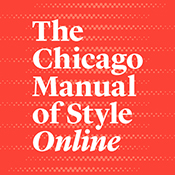Early Modern Drama
MLA Style Guides
The Modern Language Association style is most commonly used in the humanities. The latest version is 9, which came out in April 2021. The guidelines for citing sources in MLA 9 do not differ much from MLA 8, though the new handbook helpfully includes more examples of how to cite different types of materials as well as new sections on grammar, writing advice, using inclusive language, endnotes and footnotes, and annotated bibliographies.
-
MLA Handbook Ninth Edition by The Modern Language Association of America
Call Number: MH Reference LB2369 .M52 2021ISBN: 9781603293518Publication Date: 2021-04-06
-
MLA CitationsFrom Fairfield University DiMenna-Nyselius Library. Easy to find examples of commonly cited types of sources.
-
MLA Formatting and Style GuideFrom Purdue University Online Writing Center (OWL). Use the navigation on the left side of the page (you may need to scroll down a bit) to get to their "MLA Overview and Workshop" and "MLA Formatting and Style Guide information."
-
MLA Style CenterThe MLA's own resources explaining the citation style. See especially the Citing Sources and Ask the MLA menu options.
Hanging Indents
In an MLA style Works Cited list, the first line of each citation should be left justified, but each subsequent line should be indented. This is called a “hanging indent.” Some instructions on how to create a hanging indent in two of the most frequently used word processing programs on campus:
-
How to Create a Hanging Indent in Word on Mac and PCNote: this video says the instructions are for APA style, but the hanging indent info applies to MLA style as well.
Citing ebooks
-
How do I cite an online book with no page numbers?How to create an in-text citation (when quoting) and works cited reference for an e-book that has no page numbers. Scroll to the MLA-specific instructions.
Chicago Style
The Chicago Manual of Style is also sometimes used in the humanities. It consists of two documentation systems, notes-bibliography and author-date. Check with your instructor about which system they prefer.
-
The Chicago Manual of Style by The University The University of Chicago Press Editorial Staff
Call Number: MH Reference Z253 .U69 2017ISBN: 9780226817972Publication Date: 2024-09-19
-
The Chicago Manual of Style Online
 See the Notes and Bibliography Sample Citations or Author-Date Sample Citations pages for citation examples in the system of your choice.
See the Notes and Bibliography Sample Citations or Author-Date Sample Citations pages for citation examples in the system of your choice. -
CMOS Style WorkshopFrom the Purdue Online Writing Lab (OWL). Includes examples of how to cite different types of sources and sample papers showing how to format a research paper.
Zotero
Zotero is a tool for collecting, managing, and citing sources. You can install it on your computer and also access your personal database of sources online.
-
Zotero guideLITS guide to Zotero. Includes information to help you download and install Zotero, as well as information for how to begin using it as your reference manager.
Avoiding plagiarism
- How to use sources properly - LITS guide to the proper use of sources. Includes an explanation of what plagiarism is, suggestions for staying out of trouble and a Proper Use of Sources tutorial.
- How to Recognize Plagiarism: Tutorials and Tests - From the University of Indiana. A series of tutorials (including videos) and practice tests that help you recognize plagiarism as well as the proper way to quote and paraphrase sources. Note: the certification the site talks about is for UI users only.
- Incorporating Sources - Chapter in Booth, Wayne C., et al. The Craft of Research, University of Chicago Press, 2016. Explains how to quote, paraphrase, and summarize appropriately while also guarding against plagiarism.
- Last Updated: Nov 24, 2025 2:11 PM
- URL: https://guides.mtholyoke.edu/earlymoderndrama
- Print Page

